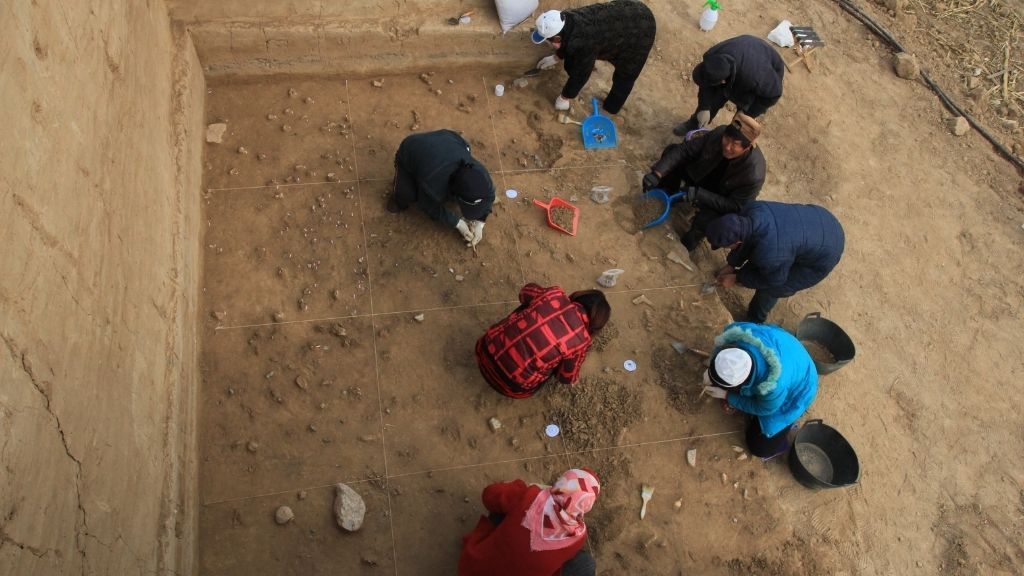Anthropology
Related: About this forumOld Stone Age culture discovered in China
By Nicoletta Lanese published about 13 hours ago
Artifacts from a newly-excavated site include tiny stone tools.

Archaeologists are shown here excavating a site called Xiamabei in northern China, where they found stone tools, fossils and ochre. (Image credit: Fa-Gang Wang)
Scientists discovered remnants of an Old Stone Age culture, less than 100 miles (160 kilometers) west of Beijing, where ancient hominins used a reddish pigment called ochre and crafted tiny, blade-like tools from stone. The archaeological site, called Xiamabei, offers a rare glimpse into the life of Homo sapiens and now-extinct human relatives who inhabited the region some 40,000 years ago.
The newly excavated site lies within the Nihewan Basin, a depression in a mountainous region of northern China. The excavation team found evidence of the culture about 8 feet (2.5 meters) underground, when they spotted a layer of dark, silty sediment that dated to between 41,000 and 39,000 years ago, based on radiocarbon dating and other analyses. This Stone Age sediment contained a treasure trove of artifacts and animal remains, including more than 430 mammal bones; a hearth; physical evidence of ochre use and processing; a tool made of bone; and more than 380 miniaturized lithics, or small tools and artifacts made of chipped or ground stone.
"The remains seemed to be in their original spots after the site was abandoned by the residents," co-first author Shixia Yang, a researcher with the Chinese Academy of Sciences and the Max Planck Institute for the Science of Human History, told Live Science in an email. "Based on this, we can reveal a vivid picture of how people lived 40,000 years ago in Eastern Asia."
Identifying a 40,000-year-old sediment layer strewn with such artifacts was "a surprise," co-senior author Francesco d'Errico, a CNRS Director of Research at the Bordeaux University and professor at the University of Bergen, told Live Science in an email. Notably, "this is the earliest-known ochre workshop for East Asia," and the collection of tiny stone tools suggests that the makers likely produced and used specialized tool kits, he said.
More:
https://www.livescience.com/old-stone-age-site-discovered-china
niyad
(119,909 posts)Judi Lynn
(162,381 posts)Judi Lynn
(162,381 posts)Stuart Layt
By Stuart Layt
March 3, 2022 — 3.00am
Evidence has been uncovered of a 40,000-year-old “factory floor” in northern China, giving insight into a previously unknown ancient culture in east Asia.
Archaeological excavations at the site of Xiamabei in the Nihewan Basin of northern China have uncovered the earliest known ochre-processing site in the region, as well as hundreds of tiny stone tools.
Ochre, a naturally occurring clay pigment, was widely used across the ancient world up to modern times, from cave painting right through to Roman murals and beyond.
Michael Petraglia, director of the Australian Research Centre for Human Evolution at Griffith University, was part of the team that uncovered the site. He said it was the first evidence ochre was produced on such a scale at this time in ancient east Asia.
More:
https://www.theage.com.au/national/queensland/almost-pompeii-like-stone-age-factory-floor-opens-window-on-ancient-culture-20220302-p5a14w.html